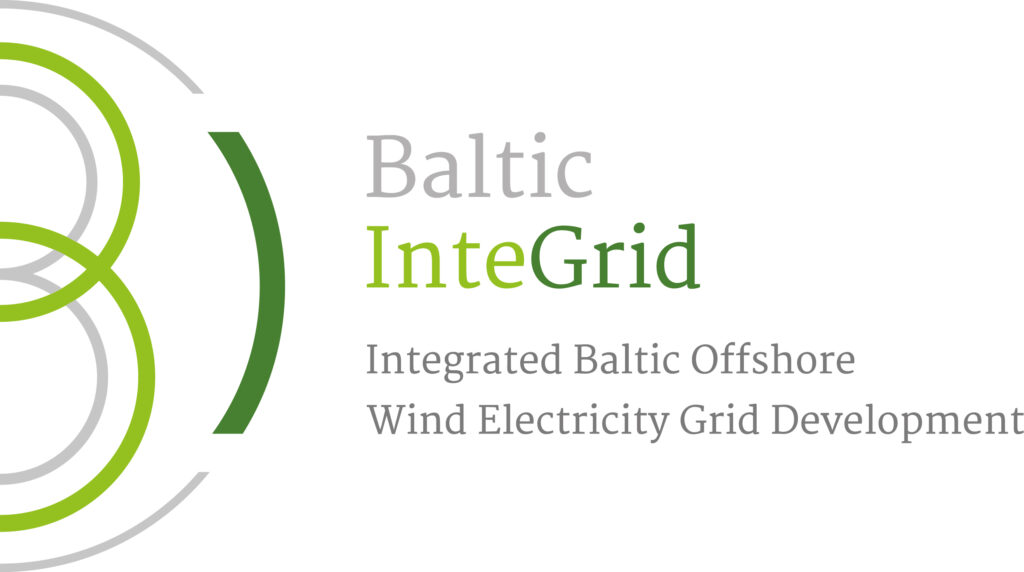Baltic Integrid

The main objective of the project is to develop a concept of the Baltic Offshore Grid integrated with planned offshore wind farms. It will be based on a detail analysis of spatial, market, political, regulatory, social, environmental and technical conditions.
Offshore wind energy in the Baltic Sea Region has an important role to play in the diversified sustainable energy mix for which the EU is aiming.
Offshore wind energy in the Baltic Sea Region has a potential of 130 GW1. By 2030, up to 12,2 GW in OWE capacity can be installed in the BSR. In 2015, across Europe there were installed about 3 GW. It gives a total capacity of 11 GW2 in offshore wind farms. Most of the offshore investemnts are located in the North Sea (69%). Under favorable circumstances the offshore wind energy can be developed in the Baltic Sea too. Waters are relatively shallow, wave height is lower, tides are less pronounced and the distances to the shore are shorter than in the North Sea, resulting in lower installation and grid infrastructure costs.
The overall objective of the Baltic InteGrid is to contribute to sustainable indigenous electricity generation, further integration of electricity markets and security of supply in the BSR by applying the meshed grid approach to optimize the potential and efficiency of OWE. To this end, during the project lifetime, 14 project partners from all 8 EU Member States from the BSR (Poland, Germany, Denmark, Sweden, Finland, Lithuania, Latvia, Estonia) will work in close cooperation with key stakeholders towards delivering project’s main outputs:
- the Baltic Offshore Grid Forum (BOGF),
- a highlevel concept for the Baltic Offshore Grid,
- the detailed feasibility studies for two case studies as components of the Baltic Grid Concept,
- recommendations and propositions.
The project will connect relevant BSR wide stakeholders (transmission system operators (TSOs), OWE industry, policymakers, national authorities, academia). They will debate and exchange their knowledge with a view to optimize transnational coordination of OWE infrastructure. Additionally, the project’s innovative research efforts will equip stakeholders with a deep insights on the framework conditions for the optimal development of a regional meshed grid.
All project activities and outputs will bring forward plans for a coordinated Baltic Sea offshore grid and thus significantly reduce one of the most important bottlenecks for the development of renewable energy sources (RES) in the BSR.
In connection with development of the offshore energy sector in the BSR and a transnational cooperation the Baltic InteGrid will bring following benefits:
- solid offshore wind market – the BSR can become the next European offshore wind region (after the North Sea) with its potential for building 12,2 GW of offshore wind farms by 2030, boosting regional job creation and establishing a market with an estimated value of 50 bn EUR by 2030,
- increase of the security of supply electricity systems – they will be more reliable, thus the risk of blackouts will be lower. The Baltic Grid concept also covers the possibility of creating additional offshore grid loops e.g. between Poland and Sweden as well as Denmark and Germany (South Baltic Energy Ring) as an addition to the Baltic Energy Ring concept, increasing the security of energy supply,
- increased RES deployment – better interconnected grids can manage more renewable energy,
- offshore wind cost reduction – creating a big and stable market will result in cost reduction through the economies of scale, learning and standardization of design, production and operation,
- energy cost reduction – increasing interconnectivity will result in lower energy prices in the region through increased competitiveness and the use of cheap renewable energy.
Finally, not only the project provides transnational value but also calculates the transnational value of an integrated approach to OWE deployment by performing the costbenefit analysis. Ideally, such a costbenefit analysis together with the planned feasibility studies should be the basis for future decisions of investors, policymakers and other stakeholders.

